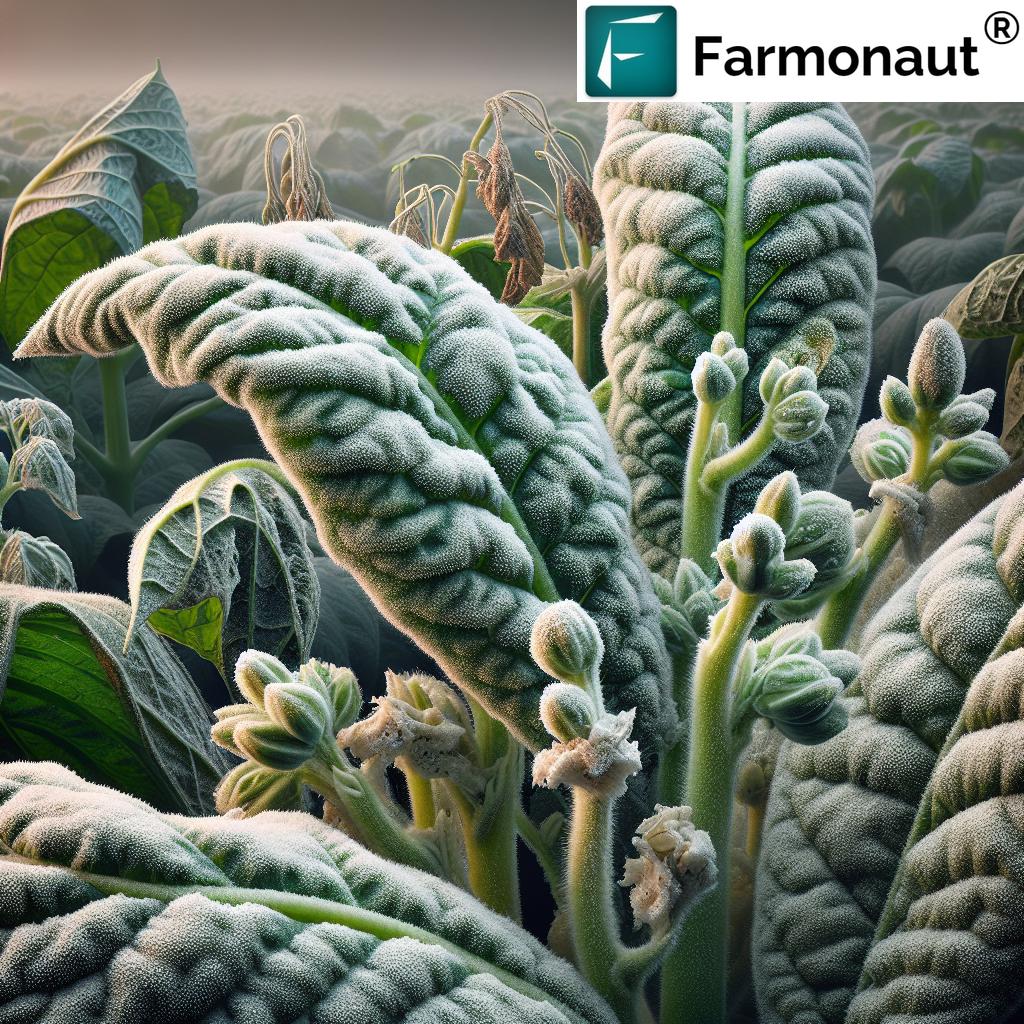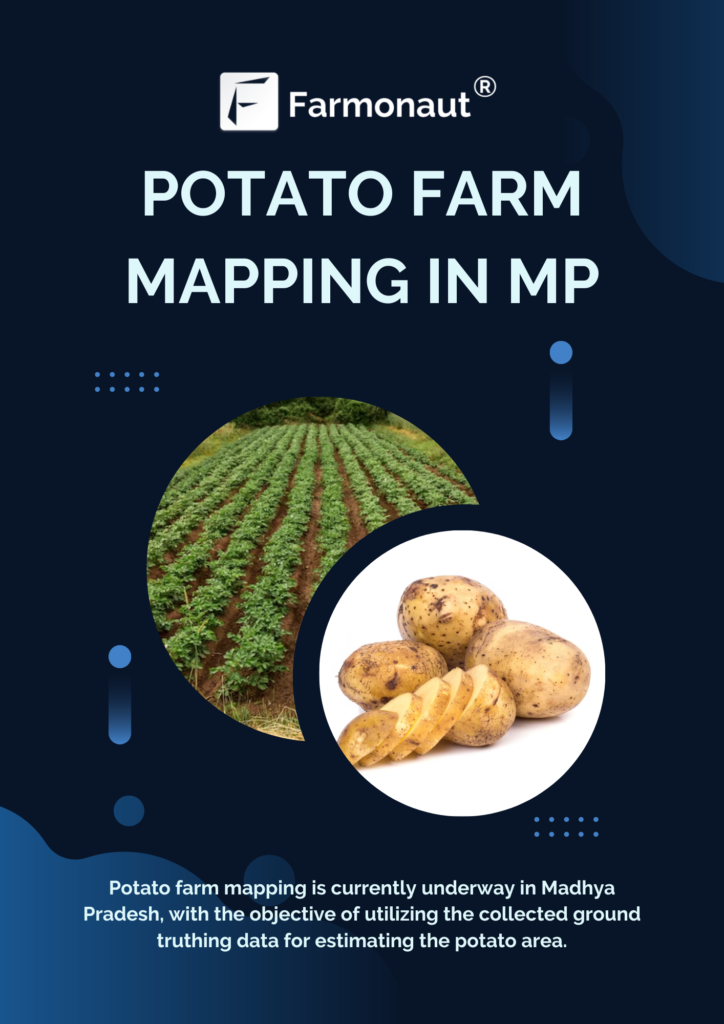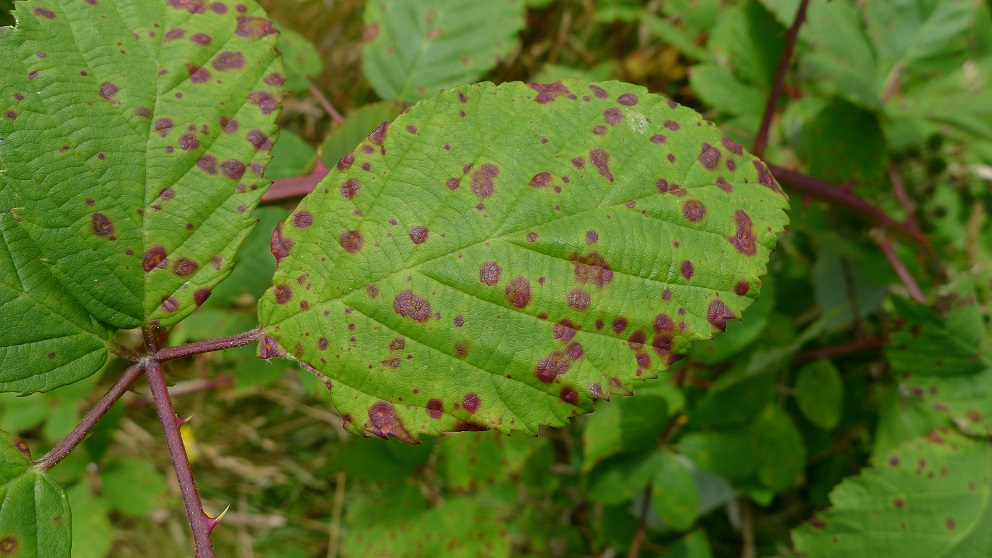How to Get Rid of Powdery Mildew: 7 Powerful Control Methods
“Powdery mildew can reduce crop yields by up to 50% if left untreated.”
Powdery mildew on plants is one of the most prevalent fungal diseases in agriculture, farming, and forestry. Whether we grow fruits, vegetables, field crops, or ornamental plants, this disease poses a serious threat to plant health and yield. Recognized by its distinctive white or grayish-white powdery coating on leaves, stems, and buds, powdery mildew can significantly impact plant growth and productivity if not managed effectively.
In this comprehensive guide, we delve into understanding powdery mildew, its symptoms, and the top 7 powerful methods to control and prevent this disease—helping you protect your crops, secure your farm’s output, and foster healthier, more resilient plants.
Understanding Powdery Mildew: Causes, Conditions & Fungal Characteristics
Powdery mildew is caused by a variety of fungal species, most notably Sphaerotheca pannosa and Erysiphe cichoracearum. These fungi thrive in warm, humid environments, typically between 65–77°F (18–25°C). Unlike many other fungal diseases in agriculture, powdery mildew does not require free water to infect plant surfaces. Instead, it flourishes under dry conditions with high humidity.
- Species Diversity: Multiple fungal species are responsible, and each targets a wide range of plant varieties.
- Survival: The fungus produces microscopic spores that spread through the air and infect new plants quickly, making management essential.
- Conditions: While rain and “free water” are unnecessary, a combination of high humidity and dry leaf surfaces during warm days is ideal for disease development.
This understanding reveals why prevention and timely intervention are necessary to manage powdery mildew disease across plants and crops.
Symptoms of Powdery Mildew and Its Impact on Plants
The initial signs of powdery mildew on plants include a white or grayish coating—similar to dusting flour—on the upper leaf surfaces. These symptoms of powdery mildew can spread to stems, buds, and even flowers and fruit.
- Early Stage: White or grayish powdery patches develop on the upper leaf surfaces or sometimes on the underside.
- Progression: Leaves affected may curl, develop yellow or brown patches, and eventually drop from the plant.
- Aesthetic Impact: Reduces the visual and commercial value of ornamental plants, affecting marketability.
- Photoynthesis Reduction: The coating blunts sunlight absorption, hampering photosynthesis and leading to stunted growth and reduced yields.
Powdery mildew disease is more than a cosmetic problem. In agriculture, farming, and forestry, unchecked disease can result in substantial yield losses—even complete crop failure.
“Over 7 proven methods exist to control powdery mildew, including preventive, cultural, and chemical strategies.”
7 Powerful Powdery Mildew Control Methods
Powdery mildew treatment methods broadly span preventive, cultural, chemical, biological, and integrated approaches. Here, we detail the seven most effective strategies to control and manage powdery mildew on plants for optimal plant health.
- Preventive Measures
- Cultural Controls
- Sulfur-Based Fungicides
- Potassium Bicarbonate Treatments
- Neem Oil Applications
- Biological Control Agents
- Integrated Pest Management (IPM)
1. Preventive Measures: How to Prevent Powdery Mildew Disease
Implementing preventive measures is the first and most important step in disease management. Prevent powdery mildew disease by disrupting the environmental conditions that favor the fungus and reduce its ability to infect plants.
- Plant Selection: Opt for resistant varieties when possible. Breeders increasingly offer resistant strains for common crops and ornamental plants.
- Proper Spacing: Ensure adequate spacing between plants to promote air circulation. This keeps humidity down around leaves and reduces the risk of infection.
- Pruning: Regularly prune dense foliage to improve light penetration and further lower humidity in the canopy.
- Watering Practices: Water at the base of the plants, avoiding wetting the leaves, as “overhead watering” increases humidity around the foliage.
- Sunlight Exposure: Ensure full sun, since powdery mildew thrives in shaded, humid environments.
- Sanitation: Remove and destroy infected plant debris (never compost it!) to minimize the disease’s ability to overwinter and infect next season’s crop.
These measures, if implemented early, are cost-effective and sustainable, and help maintain optimal plant health.
For larger fields or commercial farms where disease prevention across vast acreage is challenging, Farmonaut’s Large Scale Farm Management App offers satellite-based monitoring to track canopy density, plant stress, soil moisture, and more in real time. This helps implement timely preventive and cultural controls at scale to avoid powdery mildew outbreaks.
2. Cultural Practices to Prevent Fungal Diseases
Cultural control methods are practical actions that reduce disease risk by disrupting the powdery mildew fungus’ lifecycle and making conditions less favorable for infection.
- Crop Rotation: Rotate susceptible crops with non-host species to prevent disease buildup in the soil.
- Resistant Varieties: Plant resistant species or cultivars known for low susceptibility to powdery mildew. Consult with local extension services or seed catalogs for suitable crop choices.
- Optimal Planting Time: Adjust planting schedules to avoid periods when environmental conditions (high humidity, moderate temperatures) are best for disease spread.
- Sanitary Practices: Regular cleaning of farm tools and equipment between uses to prevent cross-contamination.
By adopting these cultural controls, growers reduce the need for chemical intervention, fostering more sustainable systems.
Measuring the sustainability and environmental impact of these cultural methods is easier with Farmonaut’s Carbon Footprinting Solution. This service enables farms to track emissions from tillage, machinery, and inputs—vital for sustainable disease control.
3. Sulfur-Based Fungicides: Classic Chemical Controls
For centuries, sulfur-based fungicides have been among the best fungicides for powdery mildew. Sulfur prevents fungal spores from germinating, offering an effective curb especially when applied before symptoms appear or at the first signs of the disease.
- Preventive and Curative: While best as a preventive, sulfur still provides value if applied at initial infection.
- Formulations: Available as wettable powders, liquid suspensions, or dust.
- Safety: Generally safe for most plants but avoid use on sensitive varieties (check label). Do not spray during hot weather (>90°F/32°C) to avoid phytotoxicity.
Repeat applications are often necessary according to the product instructions and environmental conditions. Always follow safety guidelines for mixing, application, and re-entry into treated areas.
If you’re developing an in-house farm health monitoring system, you can integrate satellite-based disease spotting using Farmonaut’s Crop Health API and Developer Documentation. Real-time data enables precision timing for fungicide applications and efficient resource use.
4. Potassium Bicarbonate Treatments: A Safe Chemical Solution
Potassium bicarbonate is a modern, eco-friendly powdery mildew treatment method. When sprayed on plants, it shifts the pH of leaf surfaces, making it inhospitable for the powdery mildew fungus and directly disrupting fungal cell walls.
- Mode of Action: Disrupts the fungal cell walls and changes the microenvironment on leaf surfaces.
- Safety: Nontoxic to most plants and safe for use around people, pets, and pollinators.
- Application: Can be sprayed up to the day of harvest—ideal for fruits, vegetables, and culinary herbs.
- Effectiveness: Controls established powdery mildew and halts further spread.
Frequent, thorough application is key for lasting results, especially in high-disease environments. This is a preferred choice for organic growers and sensitive crops.
To guarantee harvest quality and disease-free crops throughout the value chain, consider Farmonaut’s Product Traceability Module. This service secures blockchain-based records, ensuring only crops treated with safe, compliant products reach the market.
5. Neem Oil Applications: Organic Control for Powdery Mildew
Neem oil, derived from the neem tree, is a broad-spectrum natural fungicide and insecticide. It is an excellent option for those seeking organic powdery mildew treatment methods.
- Fungal Disruption: Interferes with the fungus’ metabolic processes, halting spore formation and disease spread.
- Additional Benefits: Effective against certain insects, providing dual protection.
- Safety: Safe for beneficial insects (like bees) when applied late evening or early morning, and leaves no harmful residue on edible crops.
- Frequency: Apply weekly or as soon as first symptoms are noticed for optimal results.
While not as fast as some chemicals, neem oil treatments gradually restore plant health and support an ecological balance within the crop.
For commercial plantations and forestry, Farmonaut’s Crop Plantation and Advisory Platform offers tailored advice on sustainable management, including targeted organic spray alerts based on satellite and AI data.
6. Biological Control of Powdery Mildew
The use of biological control is an emerging area in powdery mildew management. This approach uses beneficial microorganisms that actively suppress or outcompete the powdery mildew fungus.
- Bacillus subtilis: This common soil bacterium produces natural antifungal compounds and colonizes leaf surfaces, blocking infection.
- Trichoderma species: Some fungi parasitize powdery mildew itself, helping to keep populations in check.
- Application: Sold as granular or liquid inoculants. Can be sprayed or drenched onto crops.
- Safety: Harmless to crops, pollinators, and people; crucial for integrated disease management and organic farming.
For those seeking sustainable, residue-free solutions, biological control of powdery mildew offers real promise for both small-scale gardening and commercial farming.
7. Integrated Pest Management for Powdery Mildew
The gold standard for long-term disease control is the use of Integrated Pest Management (IPM). This holistic approach unites cultural practices, preventive measures, chemical and biological controls, and monitoring for coordinated, effective results.
- Regular Monitoring: Inspect plants frequently for early symptoms of powdery mildew. Catching disease early allows for rapid, targeted response.
- Assessment: Set disease thresholds—how much disease presence is acceptable before taking action.
- Method Integration: Combine cultural methods, fungicides, and biological agents according to disease pressure and crop cycle.
- Record Keeping: Maintain records of outbreaks, weather data, growth stages, and management outcomes to improve future responses.
Integrated pest management for powdery mildew is endorsed by crop scientists worldwide as the most sustainable, efficient, and resilient way to manage powdery mildew disease in all growing systems.
If you are a commercial producer, securing your crop investment through insurance is crucial, especially in disease-prone climates. Learn about satellite-based crop insurance verification for effective, fraud-resistant protection at Farmonaut’s Crop Loan & Insurance Verification Page.
Comparison Table of Powdery Mildew Control Methods
| Method Name | Type | Effectiveness (%) | Application Frequency | Estimated Cost | Safety for Plants | Time to See Results |
|---|---|---|---|---|---|---|
| Preventive Measures | Preventive | 60–70 | Continuous | Low | Safe | 1–2 Weeks |
| Cultural Controls | Cultural | 50–80 | Per crop cycle/As Needed | Low | Safe | 2–4 Weeks |
| Sulfur-Based Fungicides | Chemical (Preventive/Curative) | 70–90 | 7–14 Days | Medium | Safe/Moderate Risk | 3–7 Days |
| Potassium Bicarbonate | Chemical (Curative/Organic) | 80–90 | Weekly/As Needed | Medium | Safe | 2–5 Days |
| Neem Oil | Organic (Curative/Preventive) | 60–80 | Weekly/First Sign | Low | Safe | 5–10 Days |
| Biological Control Agents | Biological | 60–85 | 7–14 Days/As Recommended | Medium | Safe | 7–14 Days |
| Integrated Pest Management (IPM) | Integrated | 90–98 | Continuous/Threshold-Based | Varies | Safe | 1–4 Weeks |
Fungicide Application Guidelines: Effective and Safe Powdery Mildew Control
To maximize the efficiency of chemical treatments, it’s essential to adhere to expert application guidelines:
- Timing: Always apply fungicides at the first symptoms of powdery mildew or as a preventive measure during high-risk periods.
- Coverage: Ensure thorough and even application, especially on the undersides of leaves where powdery mildew spores often reside.
- Frequency: Follow manufacturer’s instructions concerning repeat intervals. Adjust based on rainfall, humidity, and new plant growth.
- Safety: Use recommended protective equipment (gloves, masks, eye shields) and keep children and pets out of the treated area for the specified interval.
- Alternation: Rotate between fungicide types or active ingredients to prevent the fungus from developing resistance.
Never exceed label doses, and always dispose of unused solutions according to local guidelines.
Managing large machinery fleets safely during plant protection operations? Discover Farmonaut’s Fleet Management System for cost-effective oversight and improved field safety.
Precision and Sustainable Powdery Mildew Management with Farmonaut
Powdery mildew’s unpredictable outbreaks require technology-driven, location-specific management for consistent success. At Farmonaut, we are committed to making precision agriculture accessible worldwide through affordable satellite-based farm analytics and advanced advisory platforms.
- Satellite Crop Monitoring: We provide real-time health maps (NDVI, soil moisture, and more) to detect stress indicative of disease (like powdery mildew) long before symptoms are visible to the naked eye.
- Jeevn AI Advisory System: Our AI gives personalized agronomic advice, including tailored alerts for conducive powdery mildew conditions or required field actions.
- Blockchain Traceability: Ensures proof that only disease-free and properly managed produce makes it to the consumer.
- Resource & Fleet Management: Track operations and resource allocation during wide-scale disease outbreaks, optimizing both input use and application timing.
- Environmental Sustainability: We empower you to monitor and improve your farm’s carbon footprint, promoting regenerative practices that limit disease pressure in future seasons.
Explore our flexible, subscription-based packages and download our app or API for the latest in crop monitoring, field mapping, and disease risk forecasting.
Powdery Mildew FAQ
What is powdery mildew, and what plants does it affect?
Powdery mildew is a fungal disease caused by species such as Sphaerotheca pannosa and Erysiphe cichoracearum. It affects a wide range of plants—from fruits (apples, grapes, cucumbers) and vegetables (zucchini, peas) to ornamental flowers and even trees in forestry.
How do I identify symptoms of powdery mildew on plants?
Look for a distinctive white or grayish-white powdery coating on leaves, stems, and buds. Leaves may curl, turn yellow/brown, and drop. In severe cases, overall plant health and yield are heavily affected.
How quickly does powdery mildew spread?
Powdery mildew spores are airborne and can spread rapidly, especially in warm, humid but not wet conditions, infecting entire plantings within days under ideal circumstances.
Are there effective organic powdery mildew treatment methods?
Yes—neem oil sprays, potassium bicarbonate, and various biological controls (like Bacillus subtilis) are all effective and permitted in organic systems.
How often should I apply treatments?
Always follow label instructions for application intervals. Generally, fungicides and biological controls are applied every 7–14 days, while preventive and cultural measures require constant vigilance and action throughout the growing season.
What’s the safest solution for edible crops?
Potassium bicarbonate and biological controls are especially safe and allowed for use up to the day of harvest. Neem oil is also safe if label precautions are observed.
Is powdery mildew harmful to humans or animals?
Powdery mildew is mainly a plant disease and isn’t toxic to humans or pets, but heavy runoff of chemical fungicides during treatment can pose risks to aquatic life—always use products responsibly.
Conclusion: From Disease to Healthy Plants
Powdery mildew is a prevalent, damaging fungal disease with the power to derail yields in farming, agriculture, and forestry. However, with a clear understanding of the causes, symptoms, and high-risk environments, coupled with diligent application of the seven powerful control methods outlined above, we can protect our crops and restore plant health.
From preventive cultural practices to the latest in integrated pest management, every tool has a place in your disease management strategy. Digital platforms like Farmonaut offer unprecedented, affordable monitoring, risk assessment, and resource-tracking technology so you can take action before small problems become field-wide outbreaks.
Remember: always monitor plant health religiously, adopt a balanced approach combining preventive, biological, and responsibly used chemical controls, and take advantage of modern farm technologies to ensure every harvest is healthy, sustainable, and profitable.
Protect your plants from powdery mildew—and see your fields thrive.


















